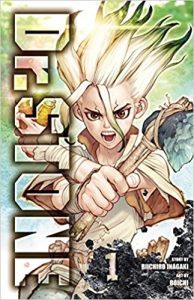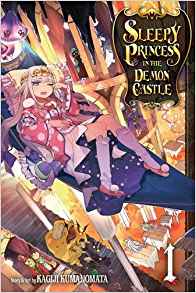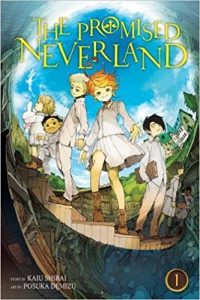Dr. Stone Volume 1 by Riichiro Inagaki and Boichi
Dr. Stone is a shonen series that is entertaining due to the combination of post-apocalyptic setting and mad scientist hero. The first chapter opens with overly enthusiastic high schooler Taiju vowing to confess his love to the girl he’s had a crush on for the past five years. His cynical scientist friend Senku wishes him well in a backhanded fashion. Just as Taiju is about to launch into his confession a mysterious light appears in the sky and all the people in the world get turned into stone, frozen in place for several thousand years.
When Taiju wakes up again, he comes to in an overgrown area littered with stone fragments of people. He wanders around and sees one of his most powerful classmates, Tsukasa, also frozen in place. Senku pops up and tells Taiju that he overslept terribly, because he’s been awake and on his own for the past year and a half. Senku is determined to restart civilization, but he needs additional help, and Taiju is going to serve as the muscle in his scientific endeavors. Senku has a habit of making grand pronouncements about the rate of his ability to reconstruct stone-age scientific discoveries by yelling “Get Excited!”
There’s certainly a lot of yelling, naked men wearing leaves, and hazardous attacks from both animals and other survivors in Dr. Stone, but I enjoyed the emphasis on adventures driven by ancient science. The dynamic between the two protagonists, with one of them being super smart and the one mainly having enthusiasm on his side also set up plenty of amusing side scenes in between all the fighting and scrabbling for survival. I tend to not always be that enthusiastic about non-sports shonen manga, but I was definitely intrigued by the first volume of this series.




Recent Comments